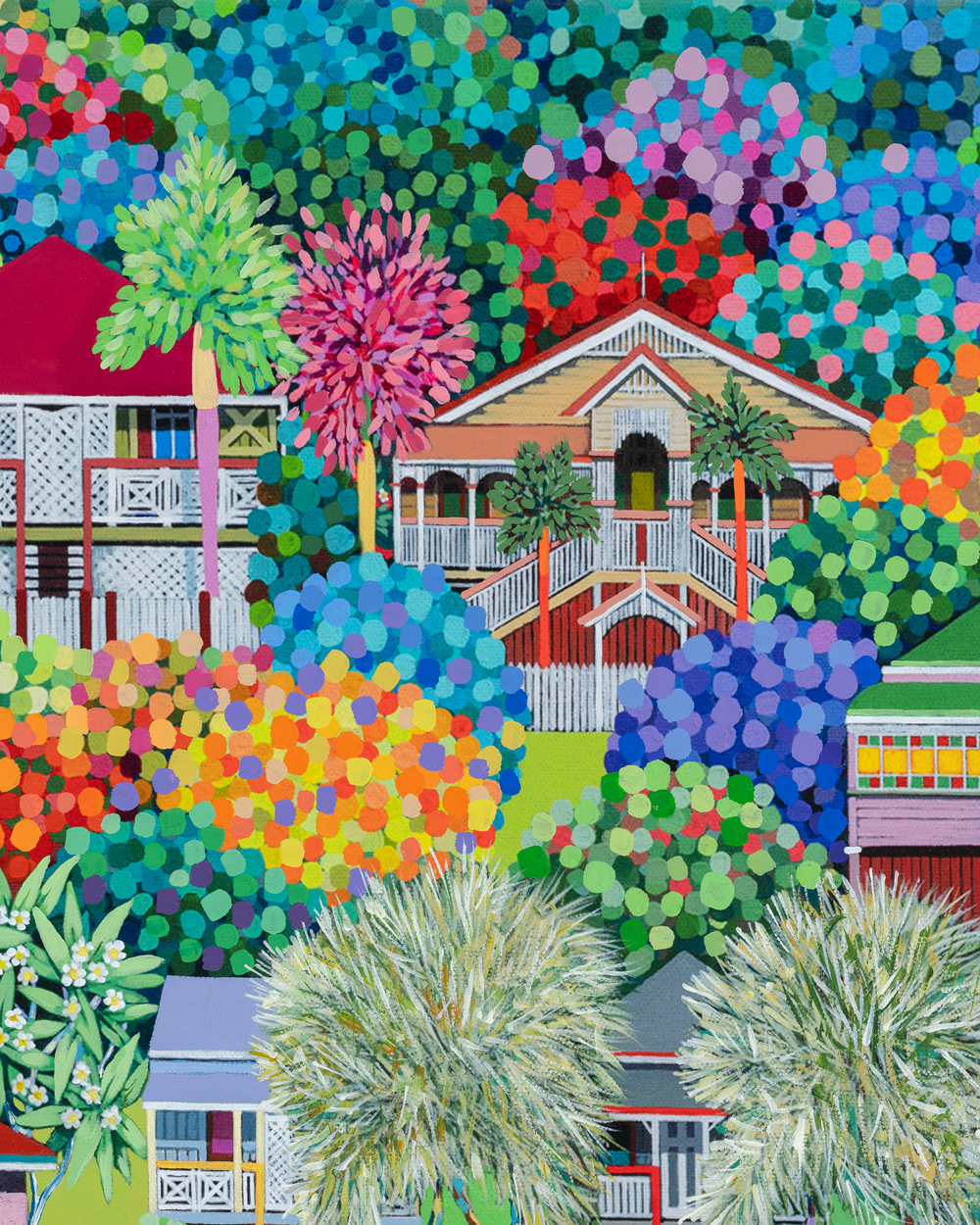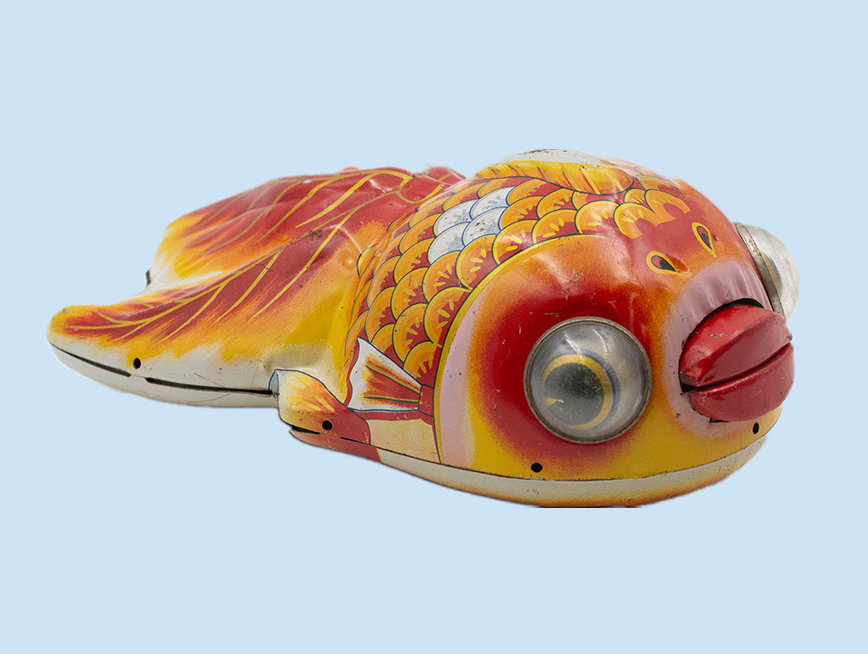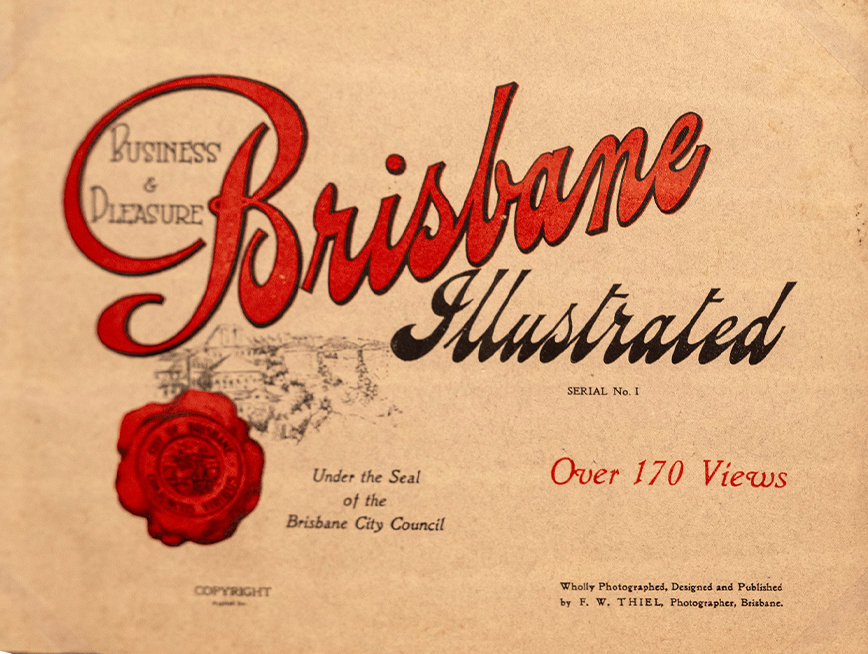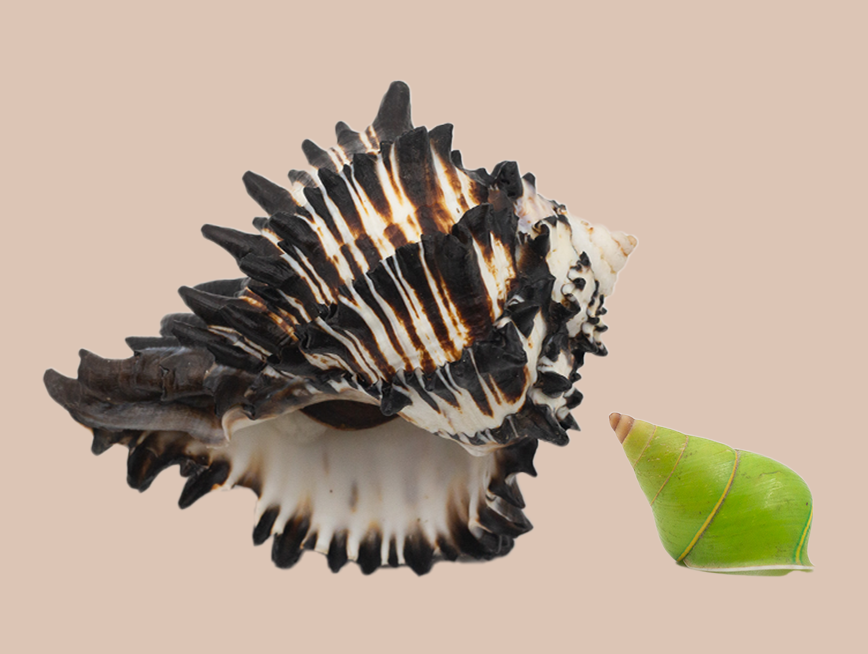5 JANUARY 2020
Known for her depiction of Brisbane streetscapes featuring iconic Queenslander houses sitting amid confetti like foliage; Debra Hood’s paintings bring the city to life with a kaleidoscope of colour.
We chatted to Debra about her first introduction to painting and the process behind her incredibly detailed work. Explore a range of Debra Hood at MoB Shop.
When did you feel the first urge to pursue a creative path?
My Godfather, Dr Eric Murphy lived with us for a time and he was a beautiful oil painter and did superb charcoal drawings daily and these enthralled me as a 6-year-old child. This is the first time I recall the intoxicating smell of Linseed Oil and I still have his old timber paint box on my studio desk. The linseed scent still lingers. As a child, besides drawing, I was also a passionate freestyle house builder with Lego bricks. I would be fascinated by the Mid-Century style homes that were advertised in the 1960s magazines such as Home Beautiful and House and Garden and would spend hours replicating these in Lego.
It’s clear that you’re inspired by the city of Brisbane, what is it about the city that you love so much?
There is so much about Brisbane I love…. Its abundance of colourful flora that continual changes throughout the year. Its perfumes. It’s intensity of light.
Having to respond to the sub-tropical climate Brisbane people are relaxed, unpretentious and open. These lifestyle traits are also reflected in the Queenslander home and I think my work responds to the joy of living in such a place. The sublime designs of the different types of Queenslander are, of course, a never-ending source of inspiration and delight.
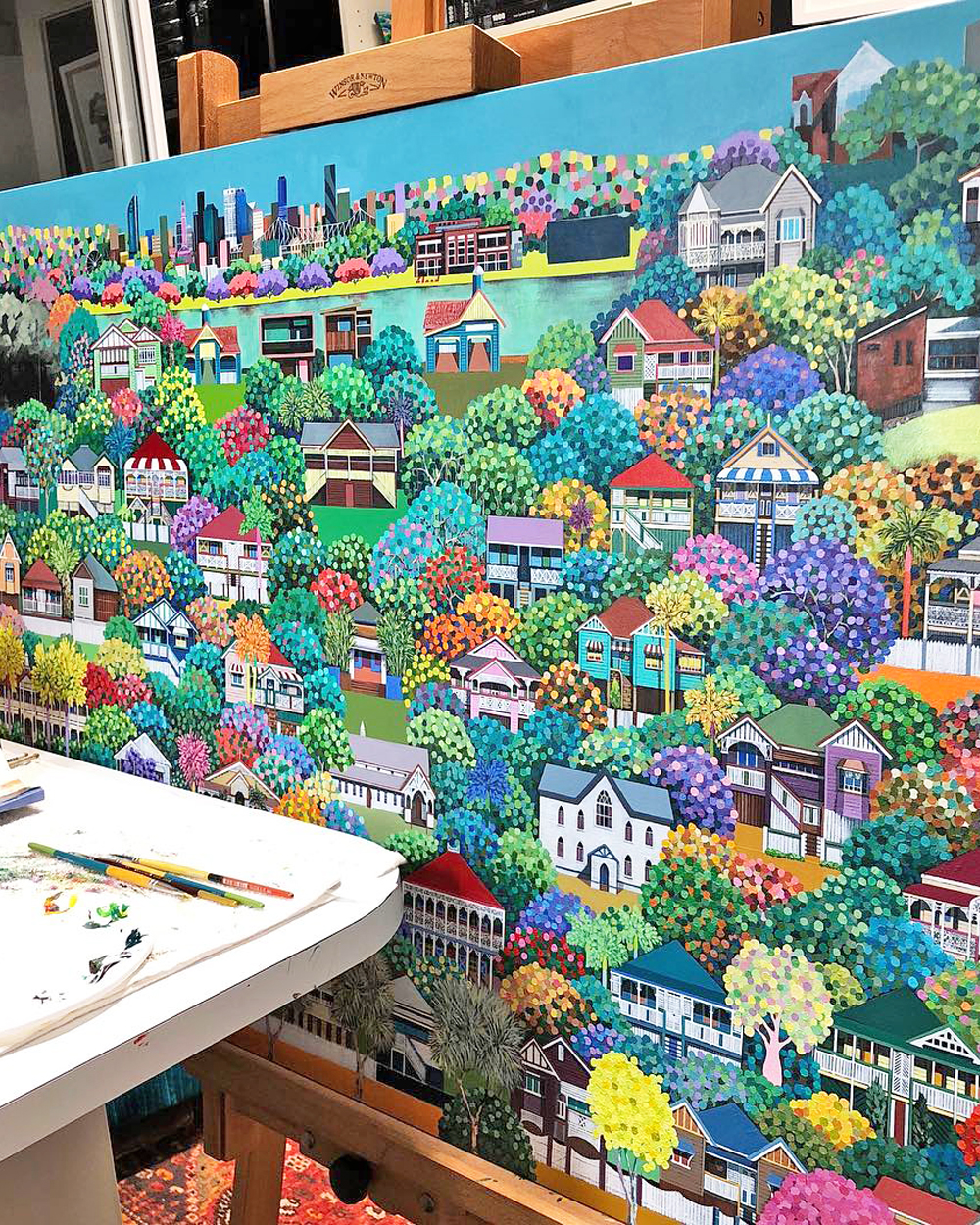
How has your style evolved over time, and what has influenced its development?
Having painted Queenslander suburban and cityscapes for close to 20 years, the houses in my work are becoming tighter and more detailed and the flora has become more abstract and “confetti” like…. small individual brush strokes of colour that look like dots but are in fact, rectangular.
Your paintings are incredibly detailed, how do you plan out a piece?
Each painting begins with a rough sketch of the main elements, directly onto a black canvas– river, hills points of interest. Then I draw each building into place. Once the drawing is completed, painting begins from the darkest tones and the image continues through to the lightest and brightest colours. This is the fun part, as I get to play with colour placement and these tiny bits of thick paint build up the layers to complete the final image. This part of the process is unplanned and feels more like instinctive drift.
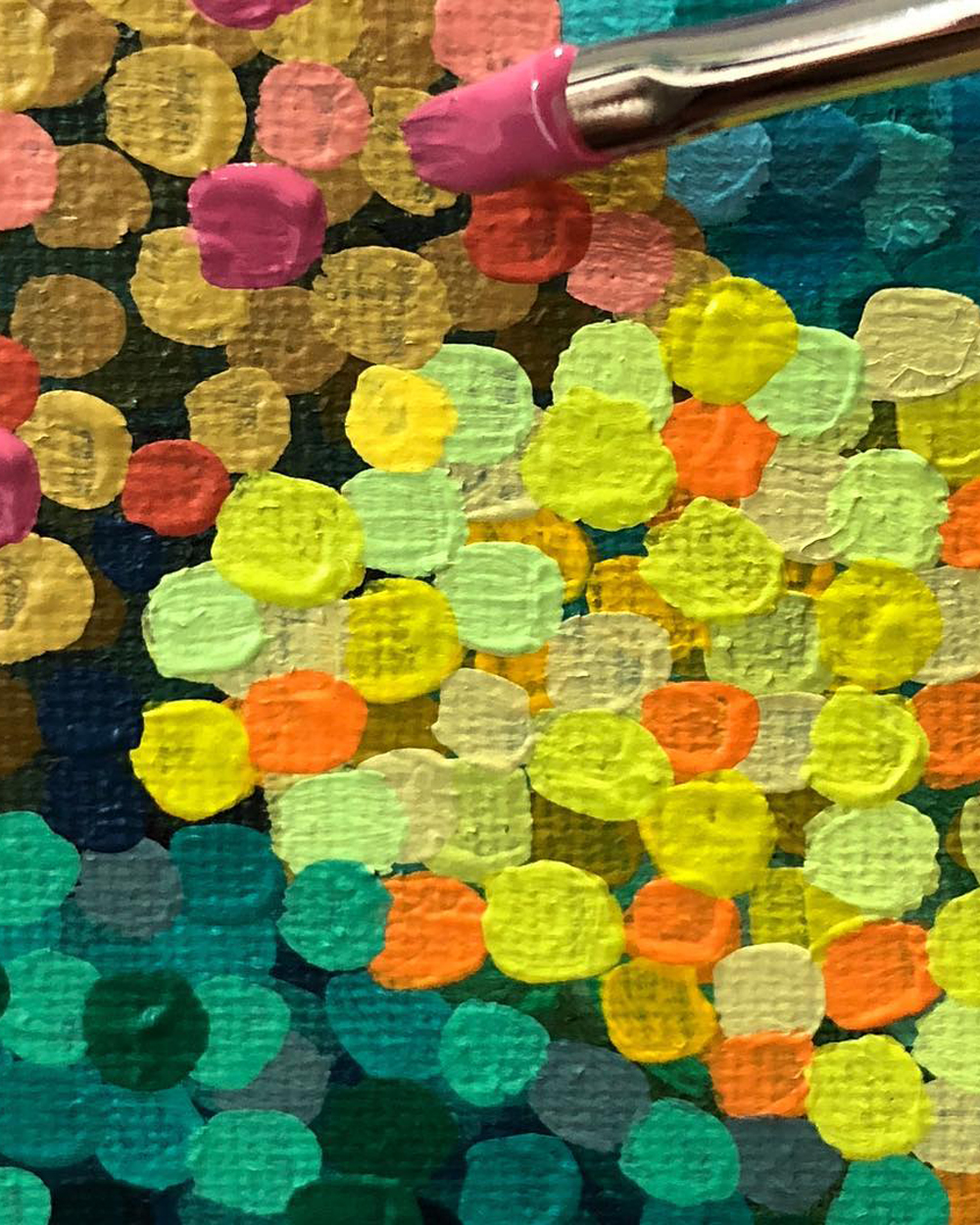
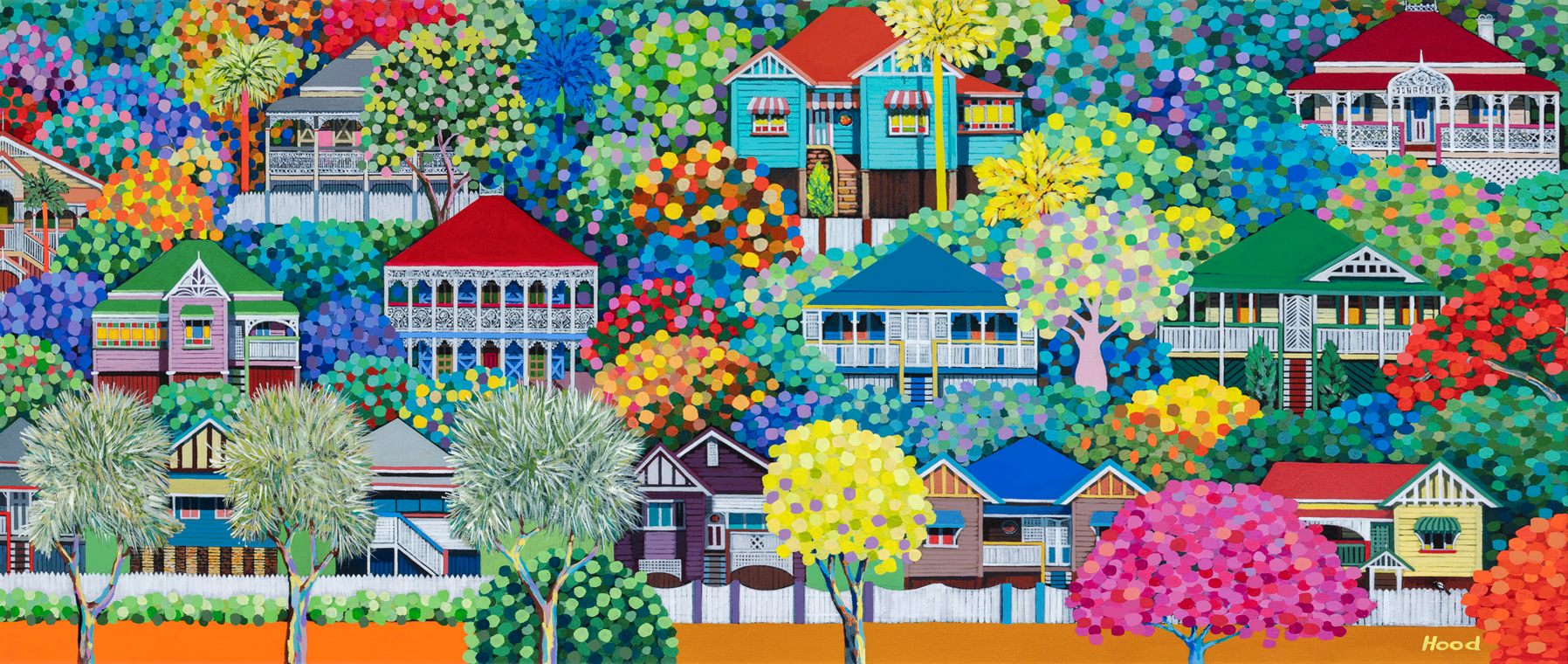
We recently had the pleasure of collaborating with you on the Colour Me Orange silk scarf for MoB Shop, what was the inspiration behind this piece?
What a delight this was! Creating this work allowed a profusion of highly saturated hues. I am often surprised with the intensity of colour in Brisbane’s suburban streets of Flame Trees, Golden Pendas, Pink Trumpet, Jacaranda and Poinciana trees. This foliage is mirrored in my paintings as a confetti-like, multicoloured display surrounding the iconic Queenslander houses.
What does a day in the life of Debra look like? Tell us about your creative process.
Typically, I spend the mornings in the studio responding to emails, packing merchandise orders, delivering stock to suppliers and generally running my art business. A non-negotiable three-hour siesta is required each afternoon, (I must be Spanish at heart) and then my painting starts at around 5pm through till 1 or 2am.
Like many fellow artists, this time of the evening gifts me the most intense creative output. I have found over the last few decades that the creative process for me, must primarily be dictated by routine, hard work and long-term commitment to my career. I do love it when I am in a desirable creative flow, but this is simply a fortuitous result that comes along with the process of the artistic endeavour.
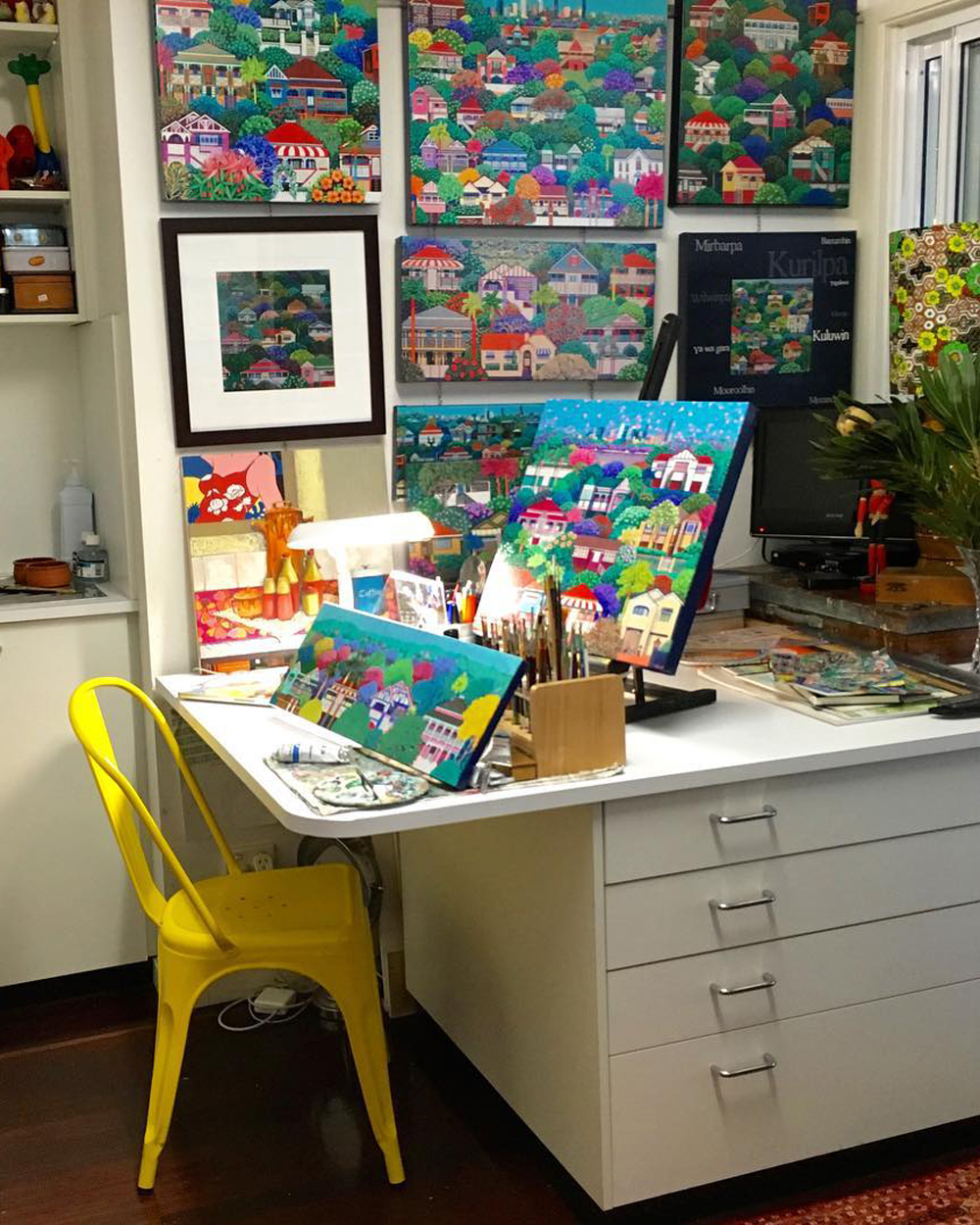
Career highlight to date?
Winning the Brisbane City Council City Cat Wrap competition in 2016 was incredibly exciting. However, the one thing I am most proud of is the Southside Art Market which I started in 2016. The idea of the market was to create a platform, purely for Fine Artists, to showcase and sell their works in a relaxed, affordable and community friendly space. It continues to be a highlight for artists and visitors alike today. The friendships and networks that this bi-annual event generated within the non-gallery supported Brisbane art community are very precious.
Do you have any exciting projects coming up?
I have an abundance of ideas for new giftware products that help showcase Brisbane to visitors and residents alike. There are a few projects in this realm on the go for release in 2021. One of which is to create a new line of Mid Century Modern (MCM) Brisbane style giftware. I freely admit to becoming a little MCM obsessed after buying and beginning the restoration of a fab 1968 John Dalton architect designed house. It seems life has come full circle back to my childhood passion of Mid Century houses, but I am not creating them from Lego these days…. the nostalgia is reality!
Meanwhile, amongst the ongoing renovations, landscaping, gardening and studio work, I hold onto a million thoughts of a solo show and installation idea that is focused on the Queenslander and Brisbane suburbs. I will be looking at creating this in about 5 years once my commitments to current painting projects are completed. So, plenty of dreaming and tweaking time during those afternoon siestas!
